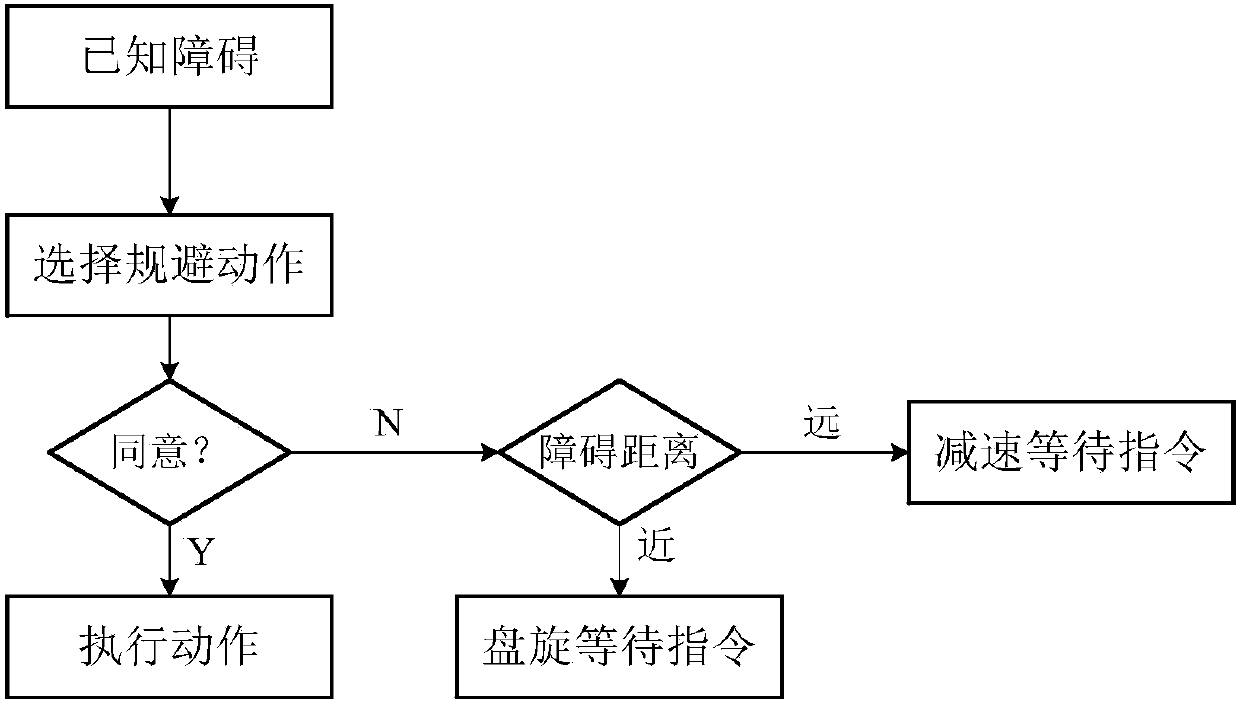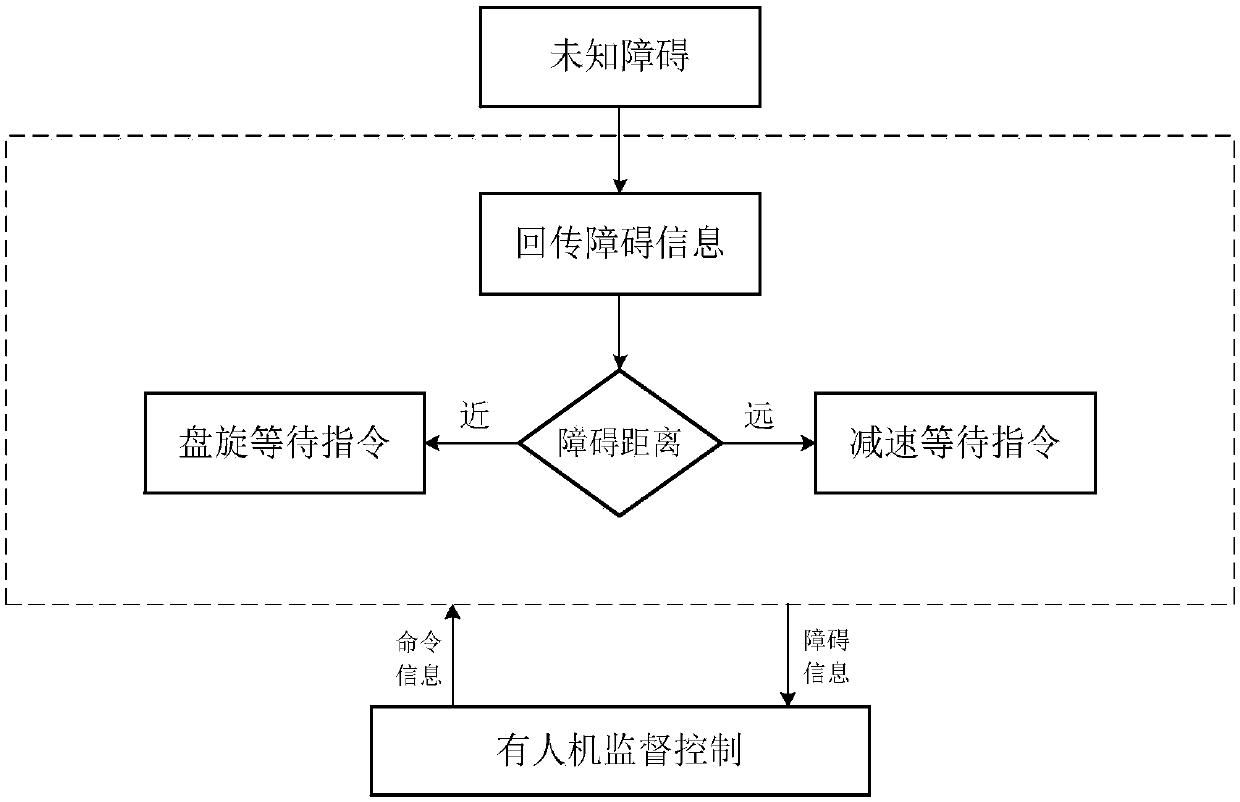Method for manned vehicle to supervise and control obstacle avoidance of unmanned aerial vehicle
A control method and unmanned aerial vehicle technology, applied in the field of unmanned aerial vehicles, can solve problems such as operator overload
- Summary
- Abstract
- Description
- Claims
- Application Information
AI Technical Summary
Problems solved by technology
Method used
Image
Examples
Embodiment 1
[0149] (1) Step1: Representation of environmental factors and obstacle avoidance actions
[0150] It can be seen from Table 5 that if the obstacle type is a known obstacle, then V1=1, V4=0; if the obstacle distance is long, then V3=0, V5=1; if the communication status is normal, then V2=0, the drone Actions A1 to A4 are all initialized to 0, and the initial supervisory control mode is exception management mode L3;
[0151] (2) Step2: Reasoning and judgment of optional obstacle avoidance actions
[0152] The state vector is:
[0153]
[0154] Iterating it, the state vector of the output node is:
[0155]
[0156] The output results show that the optional action of the UAV in Example 1 is autonomous obstacle avoidance A1, so for known obstacles, the UAV can give full play to its autonomous ability and complete obstacle avoidance independently.
[0157] (3) Step3: Judgment of the final obstacle avoidance action
[0158] For example 1, the obstacle type is a known obstac...
Embodiment 2
[0178] For Example 2, the obstacle type is an unknown obstacle, and the UAV does not have the ability to avoid obstacles autonomously, so it needs to interact with the manned machine; the manned machine receives the obstacle image information and location information returned by the UAV, and updates the obstacle information , so that the type becomes a known obstacle; the UAV then performs reasoning and judgment on the optional obstacle avoidance action according to the current environmental state. At this time, the obstacle type is a known obstacle, and the UAV has the ability to avoid obstacles autonomously. And in the exception management mode L3, the UAV has the authority to perform autonomous obstacle avoidance actions, so it does not need to interact with the manned machine, and the UAV can complete the obstacle avoidance process autonomously. The process is as follows: image 3 shown.
Embodiment 3
[0180] (1) Step1: Representation of environmental factors and obstacle avoidance actions
[0181] From embodiment 3, if the obstacle type is an unknown obstacle, then V1=0, V4=1; if the obstacle distance is far away, then V3=0, V5=1; if the communication status is a communication interruption, then V2=1, and the drone moves A1~A4 are all initialized to 0, and the supervisory control mode is exception management mode L3.
[0182] (2) Step2: Reasoning and judgment of optional obstacle avoidance actions
[0183] The state vector is:
[0184]
[0185] Iterating it, the state vector of the output node is:
[0186]
[0187]The output results show that in the case of Example 3, the UAV does not have the ability to autonomously avoid obstacles, so it slows down and waits for command A2, but due to the interruption of communication, it cannot receive the command from the manned machine. In order to ensure its own safety, the execution returns to Operate A4.
[0188] (3) Step3...
PUM
 Login to View More
Login to View More Abstract
Description
Claims
Application Information
 Login to View More
Login to View More - R&D
- Intellectual Property
- Life Sciences
- Materials
- Tech Scout
- Unparalleled Data Quality
- Higher Quality Content
- 60% Fewer Hallucinations
Browse by: Latest US Patents, China's latest patents, Technical Efficacy Thesaurus, Application Domain, Technology Topic, Popular Technical Reports.
© 2025 PatSnap. All rights reserved.Legal|Privacy policy|Modern Slavery Act Transparency Statement|Sitemap|About US| Contact US: help@patsnap.com



